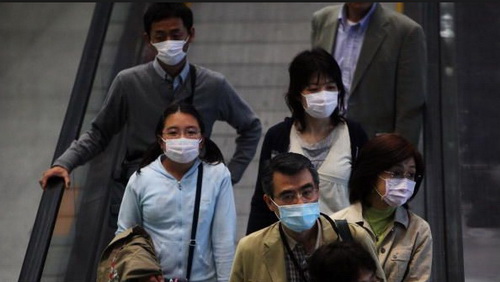Beijing Reports Fourth H1N1 Death

According to an announcement posted to the official website of the Beijing Municipal Health Bureau, as of midday on Feb 8 2011, 195 cases of A/H1N1 flu had been detected in Beijing this year, with one patient dying from the unique strain of the influenza virus over the past week, taking the total death toll for the Chinese capital this year to four.
A report published on the website of the English edition of the People's Daily in mid-January, quoted the deputy director of the Beijing Center for Disease Control and Prevention He Xiong as saying it was unlikely the A/H1N1 type of influenza will become this year's dominant strain, because many people were already infected in 2009 and about 100 million people have been vaccinated in a nationwide program that began in early 2010.
According to government statistics, most infections during the flu season are caused by the type B and H3N2 viruses. Health officials believe that A/H1N1 is unlikely to become the main flu strain in 2011.
Last year, China's Ministry of Health reported that 5,931 cases of H1N1 had been detected across the country in January 2010.
A recent Reuters report quotes a Hong Kong government spokeswoman as saying that H1N1 has also killed 10 people in Hong Kong and 51 people have undergone intensive care in public hospitals since January 24.
The report also claims that the H1N1 strain makes up 90 percent of all diagnosed flu cases in Hong Kong this year, against 40 percent last winter.
The Hong Kong Secretary for Food and Health, Dr York Chow, spoke to reporters on Feb 9, noting that:
"According to our statistics in the last two weeks, there are altogether 48 patients admitted to the intensive care units. Out of that, 60 percent of them have chronic illnesses such like diabetes, heart disease as well as asthma and so on."
The A/H1N1 strain of the influenza virus first appeared in North America in April 2009, due to its rapid spread across the globe, the strain was officially declared a pandemic by the World Health Organization (WHO) in June 2009.
The WHO refer to the strain as Pandemic (H1N1) 2009 but it was also commonly known as swine flu or variations on A (H1N1).
The new type of influenza was found to contain genes from pig, bird and human influenza viruses, in a combination that had never been observed before.
In August 2010, the World Health Organization declared that the H1N1 influenza event had moved into a post-pandemic period, in the last update published before the decision to downgrade the threat posed by the strain, the WHO reported that "as of 1 August 2010, worldwide more than 214 countries and overseas territories or communities have reported laboratory confirmed cases of pandemic influenza H1N1 2009, including over 18,449 deaths."
Links and Sources
Beijing Municipal Health Bureau: 全市卫生系统全力做好春节期间各项工作保障市民医疗卫生需求和首都公共卫生安全 (Chinese)
Hong Kong's Food and Health Bureau: Secretary for Food and Health on influenza (English)
World Health Organization: Pandemic (H1N1) 2009
World Health Organization: What is the pandemic (H1N1) 2009 virus?
People's Daily: Flu to peak next month
Reuters: HK combats more severe flu season with new antibodies
Life: Image
The views posted here belong to the commentor, and are not representative of the Economic Observer |
Related Stories
Popular

- EO QUARTERLY
- The EO Quarterly - Winter 2010/2011
- A selection of predictions for 2011, a survey of CEOs about their expectations for the com...
Interactive
Multimedia

- EEO.COM.CN The Economic Observer Online
- Bldg 7A, Xinghua Dongli, Dongcheng District
- Beijing 100013
- Phone: +86 (10) 6420 9024
- Copyright The Economic Observer Online 2001-2011
















